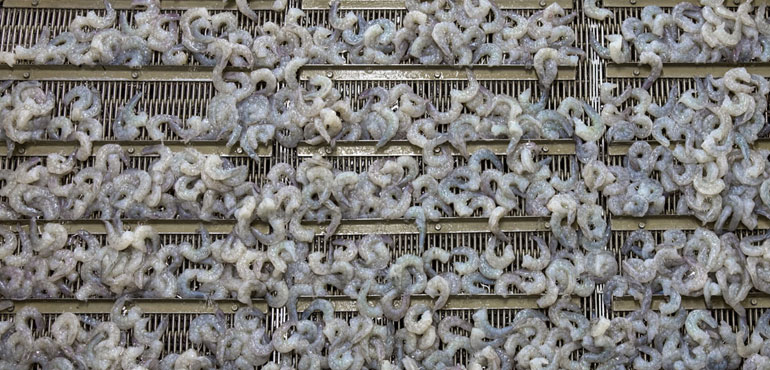Shrimp exporters are continuously adopting advanced preservation techniques to improve product quality and extend shelf life during transportation. As global demand for premium seafood grows, maintaining freshness from harvest to market is essential.
One of the most effective methods is superchilling, where shrimp are rapidly cooled to a temperature just above freezing, typically between -1.5°C to -2°C. Keeping shrimp at this temperature throughout transport significantly slows bacterial growth and enzymatic activity, preserving freshness and extending shelf life without excessive ice or freezing, which can compromise texture and flavor.

Another breakthrough technique is vacuum cooling, which involves placing shrimp in a vacuum-sealed chamber and quickly reducing the internal pressure. This process rapidly lowers the shrimp’s temperature by 10-15°C within minutes, helping to lock in freshness, inhibit bacterial growth, and maintain the natural texture and taste of the shrimp.
To further enhance preservation, many shrimp exporters utilize Modified Atmosphere Packaging (MAP). By adjusting the gas composition inside the packaging—typically increasing carbon dioxide levels while reducing oxygen—MAP slows bacterial growth and oxidation. This technology helps maintain the shrimp’s natural color, flavor, and texture, significantly extending its shelf life during transportation.
A widely used food additive in seafood processing, mix phosphate plays a crucial role in improving shrimp quality. When applied correctly, mix phosphate helps shrimp retain moisture, preventing dehydration and reducing drip loss during storage and thawing. It also enhances texture by maintaining firmness and juiciness, ensuring the shrimp remain plump and visually appealing upon arrival. Additionally, phosphate blends aid in inhibiting bacterial growth, complementing other preservation methods to maximize freshness.
By integrating superchilling, vacuum cooling, MAP, and mix phosphate, shrimp exporters can ensure their products reach their destination in optimal condition, meeting the highest quality standards. These advancements go beyond prolonging shelf life—they also enhance texture, taste, and overall product appeal, making shrimp more desirable for both consumers and the foodservice industry worldwide.
With ongoing innovation in seafood preservation, exporters can continue to deliver high-quality, fresh shrimp to global markets, ensuring an exceptional culinary experience for customers everywhere.
A specialist in food additives and seafood preservation, dedicated to enhancing product quality, texture, and shelf life. With expertise in mix phosphate applications, I help optimize seafood processing for global markets.